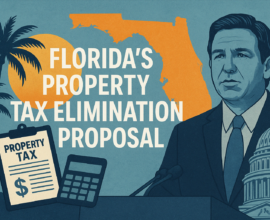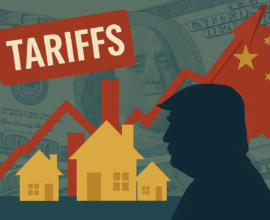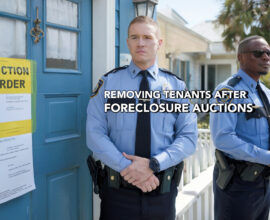Why Institutional Investors Are Buying Up Single Family Homes
Single-family rentals have long been a savvy investment choice for many. For years, small-scale investors have been buying these rentals and maintaining a diverse portfolio. However, in the past decade institutional investors have caught on to this cash cow.
You might be wondering what an institutional investor is. In short, it is one or more for-profit financial lending institutions such as insurance companies, credit unions, or the big one, commercial banks. These large organizations are building up resources to master the profits in the single-family rental industry.
Before we get into why they’re making this move, let’s take a look at who the main players are.
Which Investors Are Moving In
Invitation Homes
This company rose from the rubble of the economic collapse back in 2008. It was officially founded in 2012 with the purpose of buying inexpensive homes to rent out. The founder, Dallas Tanner, used capital from the real estate investment trust within Blackstone Group, a private equity firm, to start the business.
This is the one to watch. With over 80,000 rental units under its umbrella, this entity plans on continuing to grow at a rapid pace. As of right now, it is the largest landlord of single-family rentals in the United States.
Other Names to Watch
Fundrise, Tricon Residential, American Homes 4 Rent, and Brookfield Asset Management are also big names in the game. These companies are gaining momentum.
However, even the biggest company in this bunch trails Invitation Homes by 20,000 rental units. If the current trend continues, these institutional investors might eventually pose a threat to small-scale mom-and-pop investors.
Why Single-Family Rentals?
Reliable Renters
According to Invitation Homes President and CEO Dallas Tanner, tenants that live in single-family rentals renew their lease 75-80% of the time. With an average rental cycle of three years per person, that’s attractive when compared to the revolving door the industry sees in larger multifamily complexes.
Not only do the renters stay longer, but there are also more applicants to choose from. Anyone from a family to a group of college students might be interested in renting a home.
Commercial rentals have been in flux for the past two years as the great debate is now whether to work at home or at the office. A lot of businesses are cutting back, and that can spell disaster for investing in commercial real estate.
It’s well-known that single-family rentals attract a different sort of tenant than a typical apartment or condo. For one thing, the rent is higher, and that can weed out someone looking for a last-minute rental who would be less likely to renew their lease.
Since it is a standalone dwelling, most renters view the house as their home and are more likely to take care of it. They don’t want to be the only person in the neighborhood with weeds and broken porch slats.
Since the property is a single unit, the tenant won’t be subject to nose-to-nose neighbors. It minimizes drama between adjacent tenants with properties spread out across the city or even in multiple states. That kind of privacy draws in prospective tenants more than an apartment with 20 neighbors, including those who like to cook pungent foods every night and have screaming babies.
A single-family house is typically more spacious than a unit in a larger complex, allows for privacy, and often has a yard. That idea of the house with a white picket fence and plenty of space to begin a family lends itself to the tenant staying longer than in other types of rentals.
Consistent Appreciation
These investment companies were founded by savvy investors with years of experience who are skilled at recognizing trends. Single-family rentals are less risky than stocks or bonds, something that fluctuates day to day, hour to hour. Why sink your money into a virtual world with one click when you can have a physical asset that isn’t going anywhere?
This also means that no matter what kind of economic crisis happens, that property will still be there. Yes, during the crash in ‘08 housing values dropped. But the houses themselves didn’t go anywhere. Whether their owners were evicted by banks or not didn’t matter — the house remained.
If you are a large entity that can weather short storms, this is a fantastic way to invest your money. The concern isn’t for quick returns, and housing prices will continue to rise even if there are minor or even major peaks and valleys along the way.
Financial Incentive
Inflation is on the horizon. 2020 sent inflation to a low level, but it appears to have been only a blip on the radar. With that in mind, investing in a physical asset is one way institutional investors are using single-family rentals to hedge their other investments.
Other commodity markets are frothy and investors are wary of what’s waiting down the road. With some companies having up to 400% stock increases in the past two years, it’s sounding the alarm that we’re due for a bubble to burst.
Single-family rentals are solid assets that might even offer a return. Some top institutional investors are waiting for the markets to cool off and level out before taking any risks.
A Growing Market That Shows No Sign of Stopping
Right now, institutional investors own 300,000 single-family home rentals while small-scale investors (like most of us) own 16.2 million. Clearly the independent mom-and-pop investors are in the majority still.
This rental market has done nothing but grow over the past ten years. While homeownership has been declining, the number of renters continues to increase. There is a variety of reasons for this, and one of the biggest for most tenants is flexibility.
With home prices continuing to soar, rental prices are increasing at a slower rate. Not only that, but priorities have changed over the past several decades. Millennials and the newer generations aren’t as quick to buy as baby boomers once were.
In the wake of the Great Recession, enormous student debt, and establishing careers, homeownership seems to have taken a backseat. Single-family rentals are here to stay and doing better than ever. The big investors don’t want to miss out on those profits, and neither should you!








